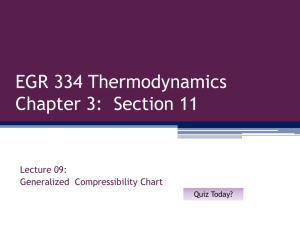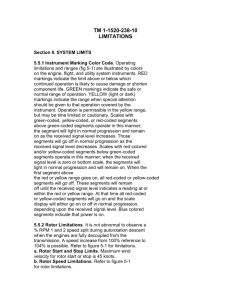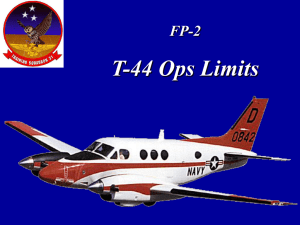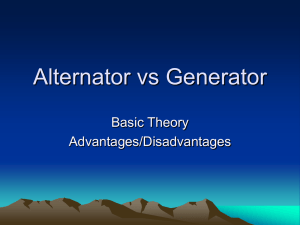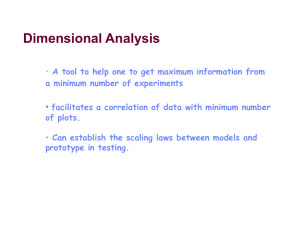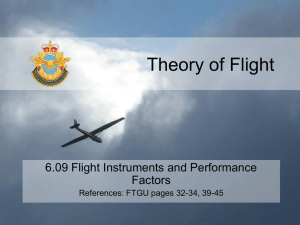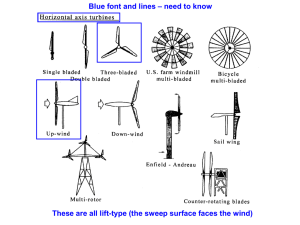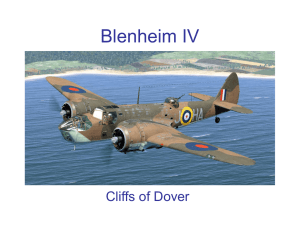Compressibility
advertisement
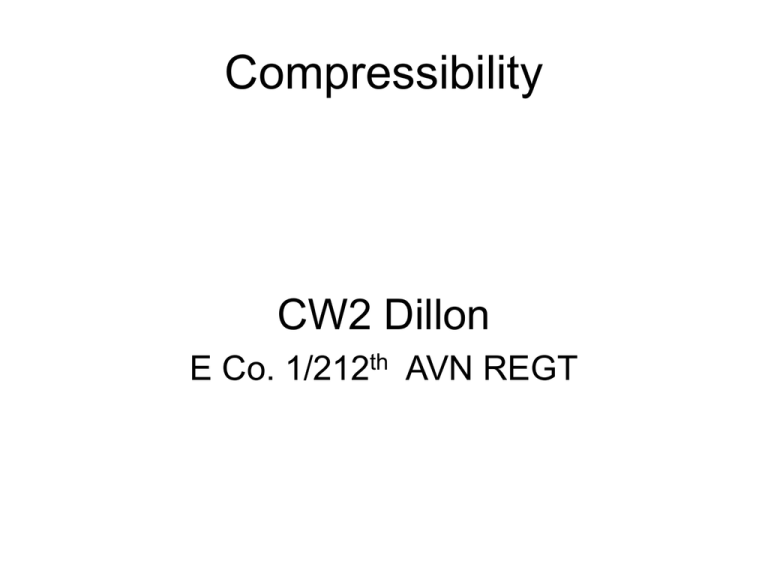
Compressibility CW2 Dillon E Co. 1/212th AVN REGT References • FM 1-203 • TM 1-1520-237-10 • Some NASA “Rocket Scientist” website • If the air speed on the top of the wing is faster than on the bottom, there will be some speed where the air on top reaches the speed of sound. This is the critical mach. Critical mach is a aeronautics term that refers to the speed at which some of the airflow on a wing becomes supersonic. When this occurs the distribution of forces on the wing changes suddenly and dramatically, typically leading to a strong nose-down force on the aircraft. This effect led to a number of accidents in the 1930s and 1940s, when aircraft in a dive would hit critical mach and continue to push over into a steeper and steeper dive. • When this happens shock waves form on the upper wing at the point where the flow becomes supersonic, typically behind the midline of the chord. • Shock waves generate lift of their own, so the lift of the wing suddenly moves rearward, twisting it down. This effect is known as mach tuck. …Not to be confused with Friar Tuck Subsonic airflow is incompressible (It acts the same as hydraulic fluid) Transonic and Supersonic flows become compressible. • Shock wave formation • • • • Drag increases & Lift decreases Vibrations Increase Center of Pressure shifts aft, nose dives Boundary layer begins to shed • • • • Shock Wave increases on top Shock wave forms on bottom Shed more boundary layer molecules CP shifts further aft, nose dives steeper • • • • Shock Wave engulfs top and bottom of blade Supersonic flow begins More boundary layer sheds CP moves further aft, Nose dives steeper • • • • Shock Wave moves behind the blade Boundary layer completely missing Bow Wave forms in front of blade Catastrophic sequence of events imminent Conditions Conducive to Compressibility - ____ Airspeed Conditions Conducive to Compressibility - High Airspeed - ____ Rotor RPM Conditions Conducive to Compressibility - High Airspeed - High Rotor RPM - ____ GWT Conditions Conducive to Compressibility - High Airspeed - High Rotor RPM - High GWT - ____ DA Conditions Conducive to Compressibility - High Airspeed - High Rotor RPM - High GWT - High DA - ____ Temperature Conditions Conducive to Compressibility - High Airspeed - High Rotor RPM - High GWT - High DA - Low Temperature - ________ Air Conditions Conducive to Compressibility - High Airspeed - High Rotor RPM - High GWT - High DA - Low Temperature - Turbulent Air • Corrective action – ________ Airspeed • Corrective action – Decrease Airspeed – ________ pitch angle (________ collective) • Corrective action – Decrease Airspeed – Decrease pitch angle (Decrease collective) – ________ G loading • Corrective action – Decrease Airspeed – Decrease pitch angle (Decrease collective) – Decrease G loading – ________ RPM • Corrective action – Decrease Airspeed – Decrease pitch angle (Decrease collective) – Decrease G loading – Decrease RPM How do NASA Rocket Scientists figure when compressibility will be encountered? How do Army Aviators figure when compressibility will be encountered? For those of you in the back that couldn’t see the chart clearly, At: -20ºC 8000’ PA 22,000 GW You may encounter compressibility at or above 143 KIAS. It is possible to encounter compressibility, however, it is unlikely with: Proper Performance Planning QUESTIONS?

